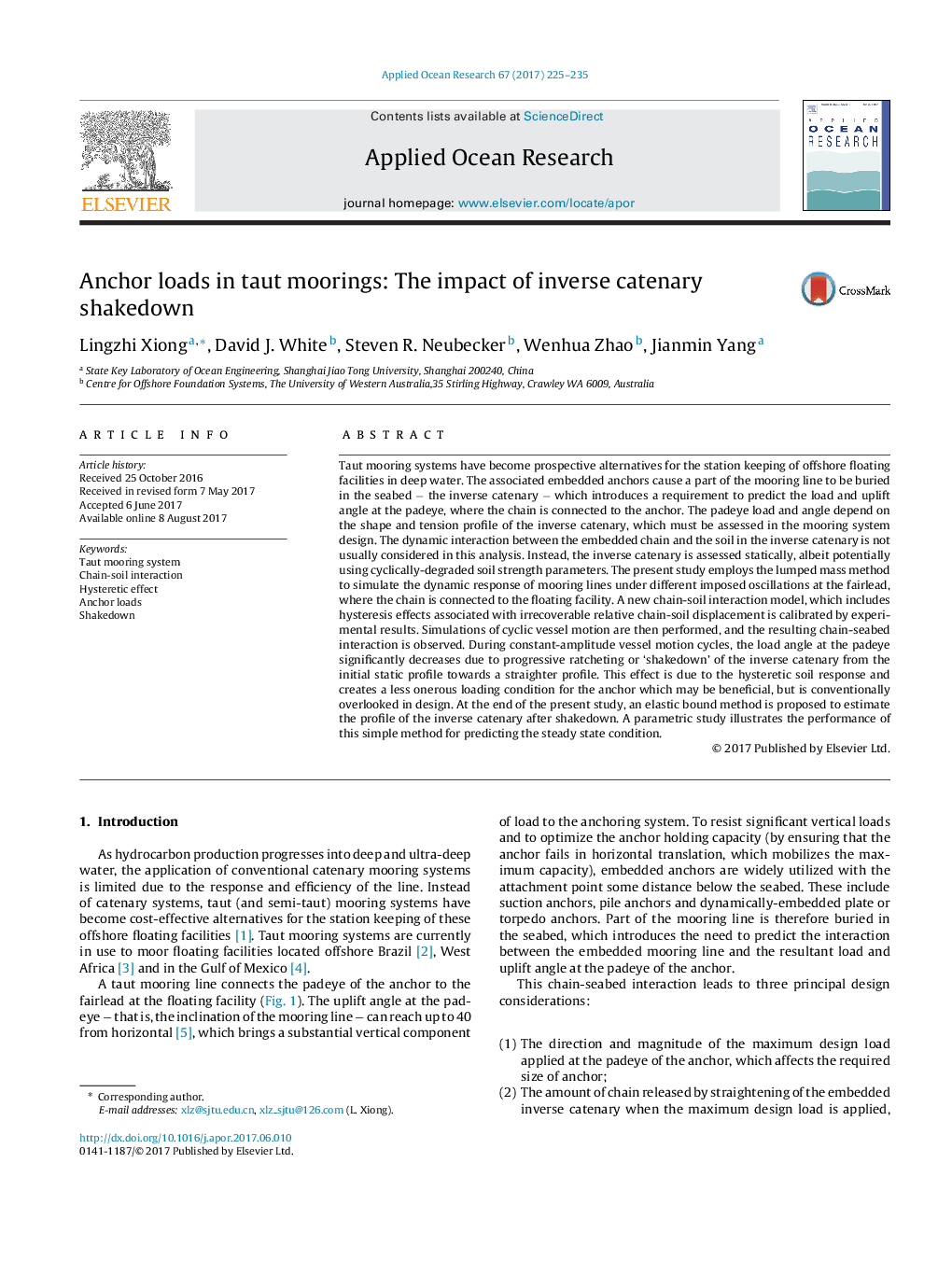| Article ID | Journal | Published Year | Pages | File Type |
|---|---|---|---|---|
| 5473282 | Applied Ocean Research | 2017 | 11 Pages |
Abstract
Taut mooring systems have become prospective alternatives for the station keeping of offshore floating facilities in deep water. The associated embedded anchors cause a part of the mooring line to be buried in the seabed â the inverse catenary â which introduces a requirement to predict the load and uplift angle at the padeye, where the chain is connected to the anchor. The padeye load and angle depend on the shape and tension profile of the inverse catenary, which must be assessed in the mooring system design. The dynamic interaction between the embedded chain and the soil in the inverse catenary is not usually considered in this analysis. Instead, the inverse catenary is assessed statically, albeit potentially using cyclically-degraded soil strength parameters. The present study employs the lumped mass method to simulate the dynamic response of mooring lines under different imposed oscillations at the fairlead, where the chain is connected to the floating facility. A new chain-soil interaction model, which includes hysteresis effects associated with irrecoverable relative chain-soil displacement is calibrated by experimental results. Simulations of cyclic vessel motion are then performed, and the resulting chain-seabed interaction is observed. During constant-amplitude vessel motion cycles, the load angle at the padeye significantly decreases due to progressive ratcheting or 'shakedown' of the inverse catenary from the initial static profile towards a straighter profile. This effect is due to the hysteretic soil response and creates a less onerous loading condition for the anchor which may be beneficial, but is conventionally overlooked in design. At the end of the present study, an elastic bound method is proposed to estimate the profile of the inverse catenary after shakedown. A parametric study illustrates the performance of this simple method for predicting the steady state condition.
Keywords
Related Topics
Physical Sciences and Engineering
Engineering
Ocean Engineering
Authors
Lingzhi Xiong, David J. White, Steven R. Neubecker, Wenhua Zhao, Jianmin Yang,
